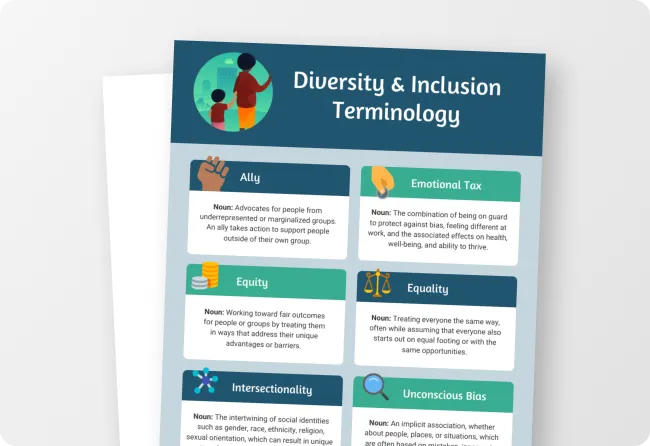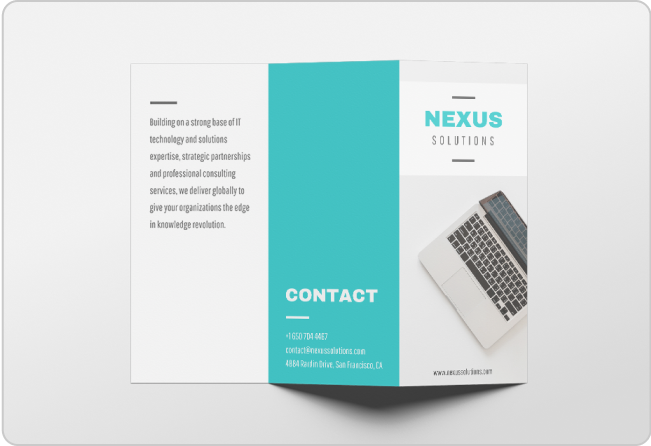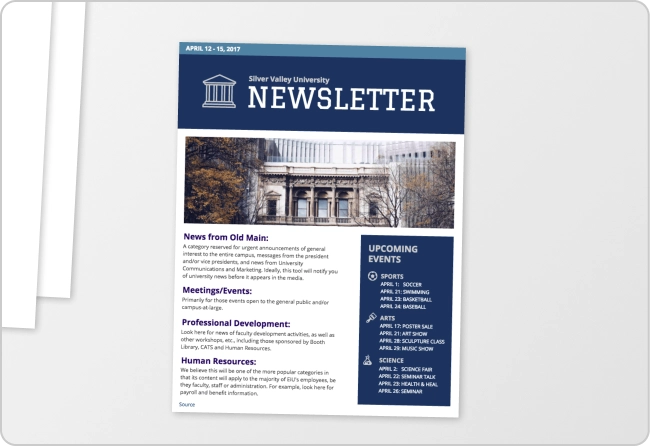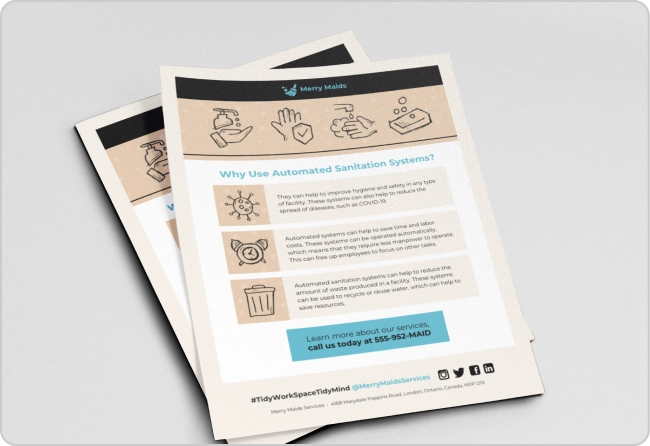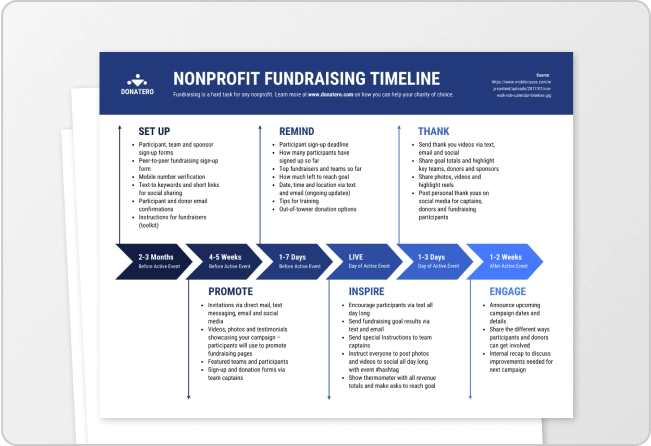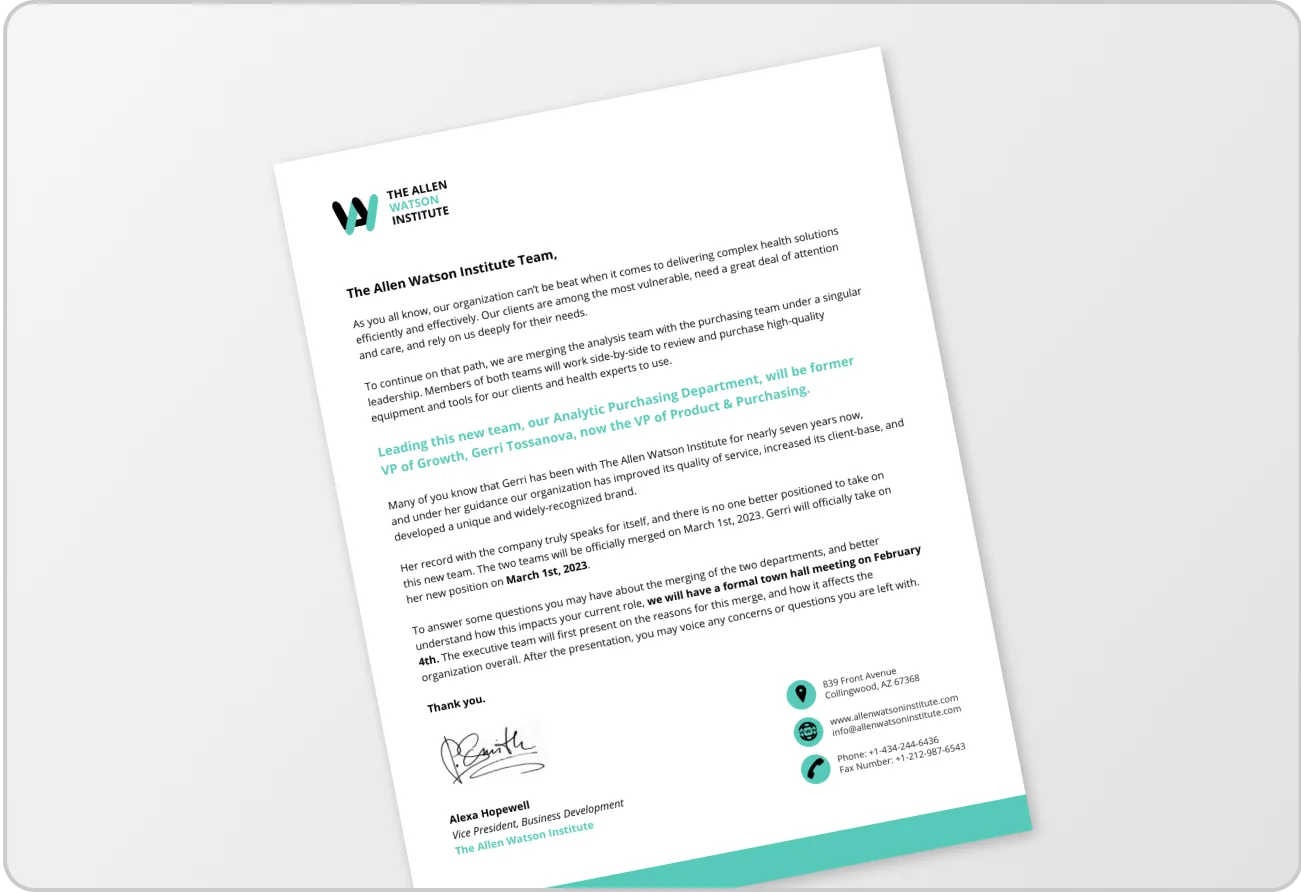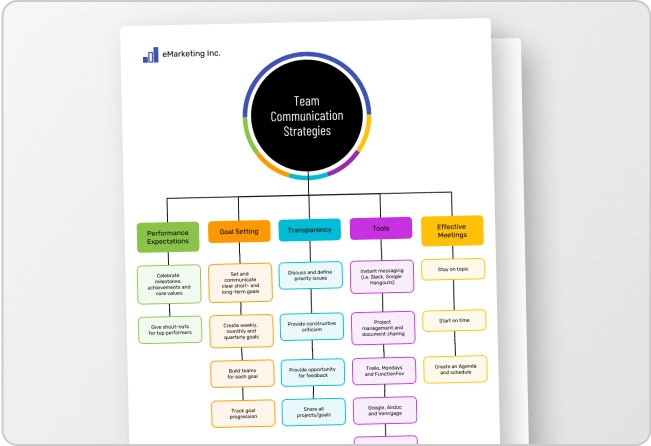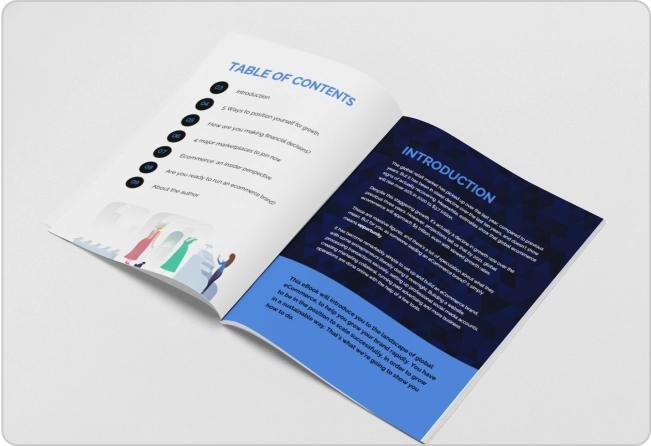
Starting a new venture without a business plan is like driving at night with no headlights. Technically, it’s doable. But, sooner or later, you know you’re going to crash.
Not having a business plan means you are figuring out everything (like budgeting, hiring or marketing) on the go.
It’s how you miss deadlines, run out of cash sooner than expected and never execute on plans that can help you grow.
A business plan timeline can help you stop going in circles and actually grow your business.
In this blog, I’ll explain the step-by-step process to map out a business plan timeline.
Whether you’re launching a new business or leveling up an existing one, these ideas can help you prioritize the important stuff, overcome bottlenecks and make things happen on time.
And yes, we’ll keep it visual. Because if your business plan looks like a 27-page essay, no one’s reading it…including you.
What is a business plan timeline?
A business plan timeline is a visual roadmap that breaks down your business plan into a clear, specific, time-based process to achieve certain objectives. It’s a structured breakdown of what activities need to happen and when so that you can act on them in a timely manner.
Think of a business plan like a calendar with a to-do list. It tells you what your goals are, what you should be doing to achieve them, in exactly what order and by when.
The goal of a business plan is to help you stay focused, avoid decision fatigue and track your business initiatives across areas like finance, marketing, customer service or day-to-day operations.
If this sounds eerily similar to your understanding of a project plan timeline, you’re right. There are some overlaps between them.
But a business plan is very different from a project plan. For example:
- A project timeline focuses on delivering a specific output for a specific business function, like launching a new product or an ad campaign.
- A business plan timeline maps out the entire foundation of your business, across all areas of business growth.
A business plan timeline is a foundational document. The project plan timeline is a tool for executing specific, short-term tasks.
Let’s say your goal is to launch a new product and get your first 50 paying customers within the next two months. You might invest:
- Week 1–2 for market research
- Week 3–4 for financial planning and strategy
- Week 5–6 to refine your offering
- Week 7–8 to launch ad campaigns and track results
Each of these activities, such as research, planning or campaign tracking, are project plans that fit within your larger business plan timeline.
Why you need a business plan template
A plan is only useful if it leads to action or the outcomes you expect. A business plan timeline turns your raw ideas into clear, time-specific activities so that you can act on them easily.
Here are a few reasons why it matters:
1. It helps you avoid procrastination
Deadlines are accountability checkpoints. If you don’t have deadlines, even the best ideas will get pushed to the next day, week or year.
A business plan timeline gives your ideas a timestamp, a fixed date for you and your teams to stick to.
Deadlines make your business plan reasonable, scientific and mapped to the calendar. Without deadlines, your business plan becomes a wishful longing.
2. It improves team collaboration
A business plan is a catalyst for cross-functional teams to work closely and in harmony. Often, every business team and functions have its own goals and KPIs (key performance indicators) to chase.
But since a business plan spans across your organization, it’s a binding agent that glues all teams together. It’s the only goal that unites everyone.
And this matters more than you think. Poor planning and miscommunication are two top reasons small businesses fail within the first five years.
Think of group projects you did in school. The teacher forced you to work with your classmates, no matter who they were, to complete a project on time. Everyone had to put in the same amount of effort if they were to get good scores.
A business plan is the same, just more long-term and continuous.
3. It boosts investor confidence
If your business has investors who have bet on your idea, they want to know how you will execute your idea to fruition.
A business plan timeline shows them that you have a tangible action plan, you can overcome the market risks and pay them back their return on investment.
This might not apply to you if you don’t have investors. But every business has stakeholders they are responsible for.
This can be your employees, their families, the vendors you work with or even your customers who rely on you for growing their businesses. Having a business plan and communicating it to your stakeholders is a confidence-booster for all of them.
4. It keeps you focused on your goals
A timeline forces prioritization. You stop spreading yourself thin and start working on high-impact areas in the right order. That’s especially valuable if you’re wearing multiple hats and juggling limited resources.
According to CGEI, businesses with formal plans grow 30% faster than those without one.
5. It makes the plan feel real
It’s one thing to write a business plan. It’s another to see it come to life. A timeline makes your strategy feel more tangible and achievable.
It turns abstract goals into a visual schedule you can act on, something your team (and even your future self) will thank you for.
Phases of a business plan timeline (Step-by-step breakdown)
Here’s a weekly, phase-wise process that you can follow to create a business plan. You can also tweak this structure to suit your specific business needs, team size or stage of growth.
Phase 1: Research and study the market
This phase is the groundwork for your business plan. It’s critical for you to research the market, validate any assumptions you may have and understand customer expectations before you open your doors to the first customer.
Carry out the activities in this phase even if you are confident you understand the market and customers. You might be surprised by the results you get.
Here are a few tasks that you need to do to complete this phase:
- Run surveys or focus group interviews to understand customers’ pain points
- Run SWOT (Strengths, Weaknesses, Opportunities, Threats) analysis
- Analyze 3–5 top competitors and what customers don’t like about them
- Find your TAM, SAM and SOM to understand the size of your market
If you don’t understand those fancy three-letter acronyms, let me explain.
TAM is the Total Addressable Market and it signifies everyone who can buy your products or services.
SAM is the Serviceable Available Market, buyers you can sell to immediately.
Finally, SOM is the Serviceable Obtainable Market, the actual percentage of the TAM and SAM you can actually have as customers based on your business model or resources.
To see through your research phase’s success, here are a few tools you would need. Don’t worry, it’s not just a one-time investment. You’d go back to them time and again as your business scales:
- Google Trends to see what people are searching for.
- Semrush to research keywords and competitor content.
- AnswerThePublic to understand what questions buyers are asking.
Phase 2: Develop a business strategy
Once you know the market and your ideal buyers, it’s time to develop a strategy. This phrase requires you to define your business model and your product or service differentiation. Starting your business also means ensuring your company structure is set up professionally. If you’re in the UK, you can use Your Company Formations to quickly register your business, handle legal requirements and set up a solid foundation for your operational strategy.
Here are the activities that you must carry out in this phase:
- Decide your business model. I recommend either the Lean Canvas or Business Model Canvas because both are visual frameworks that give you a clear, one-page overview of how your business can create, deliver and capture value.
Here’s a perfect template to show you how the Lean Canvas business model might look:

If you are more inclined toward the Business Model Canvas, you can use this board:

- Next, define your target audience, value proposition and unique selling point (USP). This will help you figure out who you want to appeal to and why they should buy from you. Here’s a great infographic on how to find your target audience:

- Set clear goals using OKRs (Objectives & Key Results) or the SMART goals framework. SMART stands for: Specific, Measurable, Achievable, Relevant and Time-bound.

Phase 3: Do your financial planning
You need to figure out if your business idea can actually make money and how long it might take. This is where your ideas meet the real world…and the learning can be ruthless.
For example, if the numbers don’t look good, you will need to revisit your idea, offering or target market. While doing your financial projections, also consider whether your product falls under taxable categories. For example, SaaS and subscriptions are taxable in certain states and countries, which can affect your pricing and overall margins.
But if the numbers look favorable, here are a few things you should focus on in this phase:
- Estimate fixed and variable costs. This includes rent, salaries, tools, supplies or anything else your business will spend on.
- Calculate the break-even point to figure out when your business becomes profitable.
- Forecast monthly cash flow for at least the first 12 months to estimate how much money you’ll need to stay afloat.
You’ll need some really solid tools to crunch these numbers:
- Google Sheets or Microsoft Excel for financial modeling
- QuickBooks for tracking income, expenses and cash flow
- Venngage for populating numbers into easy, visual templates
Phase 4: Draft the business plan
If you’ve made it this far, congratulations! You’re past the halfway point.
Now you’re ready to write your business plan in a structured format. Just remember to keep it clear, concise and reader-friendly. It’s ideal if you can draft it visually so that it’s easy for everyone to process the information at a glance.
Here’s the format that most business plans follow:
- Executive Summary to give a high-level snapshot of your business and what you aim to achieve.
- Company overview to outline your mission, vision, team and business structure.
- Product/Service Description to explain what you offer, how it works and why it’s valuable.
- Market Analysis to show who your customers are, what they need and how big the opportunity is.
- Strategy and Implementation Plan to define how you’ll attract customers and scale your business.
- Financial Plan to communicate your revenue model, budget, projections and funding needs.
- Appendices (optional) to include supporting data like charts, resumes or research that backs your claims.
I suggest you spend a little more time to really understand this process. Read our guide on how to write a one-page business plan.
Phase 5: Create actionable timelines
This phase brings your business plan all together in a visual, time-bound format. It’s where you can now turn your plans into actionable and tangible timelines.
Here’s what to do in this phase:
- Use a timeline maker like Venngage, Gantt chart tools or project planners.
- Break down major goals into visual phases (weekly, monthly or quarterly milestones).
- Review with key stakeholders and revise the plan where needed.
Pro-tip: Choose a design layout, vertical or horizontal, based on where you want to use it; print, deck or online.
Phase 6: Finalize and present
In the final phase of creating your business plan, it’s all about packaging all the ideas so far into a presentable format.
Keep in mind that, in business, perception matters more than reality. How you present your information can matter more than the information itself.
Your investors, partners or internal company leaders might overlook a solid idea buried in clutter, while a simple deck with clean design and structure can grab everyone’s attention.
Here are a few things you can do to ensure a good reception:
- Export your plan to PDF or create a shareable presentation.
- Use visuals like charts and graphs to keep your audience engaged.
- Highlight key milestones and KPIs clearly in your slides.
- Practice your presentation speech and prepare for handling questions.
Tools to help you build a business plan template
We’ve briefly touched on a few tools earlier. But as your business grows, you’ll find yourself returning to some of those again and again.
Here’s a closer look at four must-have tools that will help you come up and execute on your business plan from start to finish.
1. Semrush

Semrush is a leading keyword research tool, but it would be limiting to pigeonhole it as an SEO-only solution. It’s a great tool for continuous market research, especially if you’re trying to validate demand, research competitors or find strategic content gaps in your industry.
And it’s as useful a tool when you’re launching a new business as it is when you’re growing an existing one.
Pros:
- Powerful keyword tracking, competitor intel and SEO audit capabilities.
- Offers in-depth audits to identify and fix technical issues on your site.
- Built-in content marketing toolkit to help you plan, write, and optimize content in one place.
Cons:
- Some learning curves for beginners unfamiliar with SEO.
- Some keyword data may vary slightly compared to Google’s own tools (e.g., Search Console, Keyword Planner).
- Pricey for solo founders or bootstrapped startups.
Best for:
Small businesses looking for scientific and sustainable ways to fight against bigger competitors.
Pricing:
2. Google Sheets

As part of the Google Workspace app suite, Sheets is a great planning tool for building your business plan timeline, budgeting or estimating cash flows.
Sheets offers almost the same functionalities as Microsoft Excel, but it’s way better for real-time collaboration and automatically backs up your work to the cloud.
Pros:
- Easy-to-use and readily available if you’re already a Google Workspace user.
- Allows real-time edits from multiple users without version control issues.
- Integrates with other tools via Google Apps Script or third-party add-ons.
Cons:
- Requires some spreadsheet literacy.
- Limited analytics functions compared to MS Excel.
- Can slow down with very large datasets or complex formulas.
Best for:
- Everyone from one-person businesses to corporate teams who need an adaptable foundation for financial planning and milestone tracking.
3. QuickBooks

QuickBooks by Intuit handles the financial nuts and bolts of your business plan, such as bookkeeping, expense tracking, invoicing and even forecasting.
Once your plan moves into execution and revenue starts flowing, the tool can help you stay financially accountable and prepare for next-level growth.
Pros:
- Offers built-in reports for profit and loss, cash flow and tax readiness.
- Automates recurring tasks and integrates with banks for real-time updates.
- Scales well for growing teams for payroll, inventory and other use cases.
Cons:
- Some features have a learning curve.
- Its features can feel like overkill for early-stage businesses.
- Monthly subscription fees may be a stretch for lean startups with minimal finances.
Best for:
- Small business owners and growing teams that need to manage day-to-day finances without hiring a full-time accountant.
4. Venngage
Venngage doesn’t fit the traditional definition of being a business plan tool, but it’s priceless if you’re trying to visualize your timeline clearly.
That’s because a well-designed timeline can turn a boring-sounding plan into a compelling, digestible and goal-oriented roadmap.
Pros:
- Simple drag-and-drop interface with templates for timelines and strategy maps.
- Professional-looking visuals can elevate how your plan is perceived.
- Great for non-designers who need to create clean, branded graphics quickly.
Cons:
- Limited to design; doesn’t support data modeling or calculations.
- Exporting, private sharing, and brand features require a paid Business or Premium plan.
Best for:
- Business teams who want to communicate their plan visually to partners, investors or teammates.
Examples of business plan timelines (With visual templates)
Sorry to sound like a broken record, but your business plan shouldn’t read like essays.
Visualized business plan timelines can help you organize your ideas into digestible, time-bound phases.
Here are a few business plan timeline templates you can tweak to fit your business needs.
1. Target-based business plan timeline

This clean, horizontal table format works well for breaking down your business plan into actionable stages across weeks or months.
Each column has important details (e.g., target audience, strategies and tactics) and each row lists key deliverables like goals and due dates.
This template is perfect for small business teams who need a simple, structured overview of what gets done when. You can rename columns to match your business plan, add icons or labels or customize the colors to match your brand identity.
2. Month-by-month business milestone timeline

This vertical layout shows a monthly breakdown of business plans at a glance. It’s a great template for when you want your plans broken down into short-term, time-sensitive goals.
Each block on the timeline represents a month with multiple milestones relevant to your business, such as “Launch beta website,” “get first 10 customers,” or “finalize the ad campaigns.”
It’s a perfect template for fast-moving business teams who want to visualize their focus and traction in a linear, monthly format.
3. Strategic initiative business plan roadmap

This roadmap-style template is built for strategic depth. It lets you plan initiatives into broader focus areas like “Conduct user surveys” and “Set budget and costs” with a clear sense of focus across the yearly calendar.
This template is best for high-level business plans when you need to show how multiple initiatives should run in parallel. If you’re scaling or raising funds, use this template layout to show how each initiative maps to the bigger picture.
Common mistakes to avoid when creating your business plan timeline
Even the best-laid business plans can go sideways if your timeline is unclear or disconnected from reality.
A timeline is more than just a calendar. It’s a framework that defines the sequence, responsibility and feasibility of every strategic move.
Below are the most common pitfalls businesses make when building their business plan timeline.
1. Cramming too many activities in each phase
Overloading your timeline with too many activities isn’t practical. When every phase is packed with five different goals, none will get the attention they deserve. Overplanning a recipe for failure.
Instead, prioritize no more than 1–2 critical objectives per phase. Think in terms of milestones, not necessarily activities.
Here’s a good way to measure if your phase-wise planning is too little or too much. If you can’t summarize the focus of a phase in one sentence, it’s probably bloated.
2. Ignoring unexpected surprises
Many timelines assume perfect conditions: no delays in hiring, market downturns or technical glitches.
But life is rarely that straightforward. A lack of contingency planning often leads to unexpected bottlenecks.
Here’s how to fix it. Add a 15–20% time buffer between overlapping, dependent phases. For example, if Phase 2 (Product Development) depends on Phase 1 (Customer Research), make sure delays in Phase 1 don’t domino the entire plan.
3. Not assigning ownership
Even if you have the best business plan timeline on paper, it’s useless if there’s no one to steer it to completion. Lack of ownership leads to half-hearted execution, poor handoffs and a culture of finger-pointing.
To avoid this, assign a directly responsible individual (DRI) for every phase or milestone. This will help you hold people accountable for their deliverables and remove confusion.
4. Confusing project plans with business plans
Most teams get lost in the execution (e.g., campaign launches, customer surveys, sales forecasting) and forget the bigger objective of why they are doing what they are doing.
Your business plan timeline should focus on strategic moves, not just checking off project tasks. Project plans lie within the business plan, not the other way around.
5. Building timelines without metrics
A timeline without defined outcomes is just a to-do list. If you can’t measure success, you won’t know if you’re on track or just busy.
Assign a measurable goal to each phase. For instance, “Complete 15 customer interviews by Week 4” or “Reach $10K MRR by Month 6.” This approach will help you get clarity and sell your ideas more confidently, especially if you have external dependencies, such as on investors.
Tips for staying on track
A business plan timeline works only if you stick with it. In practice, most businesses drift apart from their plans once they start dousing day-to-day fires.
Below are some proven strategies to help you stay on track with your business plan timeline.
1. Run weekly reviews
Once a week, block 30–60 minutes on your calendar to assess the plan’s progress, what didn’t work and what needs to change.
This helps you stay grounded in your short-term tasks while still ensuring the big-picture outcomes. Think of weekly reviews as your periodic car maintenance.
- Use a simple spreadsheet or dashboard to mark off progress.
- Watch out for blockers…issues that might indicate the phase was poorly planned.
- Review key metrics if applicable (e.g., number of leads, new sign-ups, ad impressions).
2. Break down phases into daily task goals
You can’t move big mountains without daily traction. Break your business plan milestones into smaller, daily tasks that people can complete in 30–90 minutes. This helps you build momentum and avoid procrastination, especially in smaller teams.
I suggest you use the “MIT” method (Most Important Task) to prioritize 1–3 critical tasks every day that are tied directly to your biggest goals in a specific phase.
3. Set calendar reminders and nudges
When you are building a business, you can rely solely on motivation. Use your calendar as a tactical tool, not just to plan meetings, but for reviewing progress, building time blocks or triggering task-specific notifications.
It doesn’t matter which calendar tool you use. You can choose Google Calendar, Notion or even your phone’s default reminders.
4. Use tools to stay accountable
In an age of AI, there’s no shortage of tools that can help you keep your timeline visible and top of mind. Here are a few tools that we use at Venngage and can recommend:
- Use Motion AI-planner to auto-schedule tasks based on priority and availability.
- Choose between Trello or Asana to visualize progress across multiple timelines and improve collaboration.
- Try Notion for organizing notes, maintaining databases and knowledge management.
Just be sure to pick a tool your team will actually use. Otherwise, adding more tools to your tech stack will add extra work to your team’s everyday chores and bring down their productivity.
5. Involve a co-founder, mentor or peer
Nothing beats having an accountability partner to keep you honest, focused and motivated. Whether it’s your co-founder, a mentor or a colleague, schedule regular check-ins with someone who can help you stay on track.
This can either be a bi-weekly 15–30 min call to report your progress and troubleshoot issues, if any. You can even discuss things over email, Zoom meeting or Slack Huddle to share updates or unblock any stalled progress.
Turn your plans into actions
Every new business starts with an idea, but it’s how you execute on your plan that separates successful ones from those who shutter down.
And execution needs structure…clarity, organization and deadlines. A business plan timeline helps you break your ambitious goals into clear, achievable tasks so that you can make progress everyday.
If you’re still not sure where to start, begin by talking to your prospective customers or researching the market. Once you go through the necessary process, put your business plan in a visual template.
Try Venngage’s free visual templates today. There’s no reason why you should delay it any further.





























